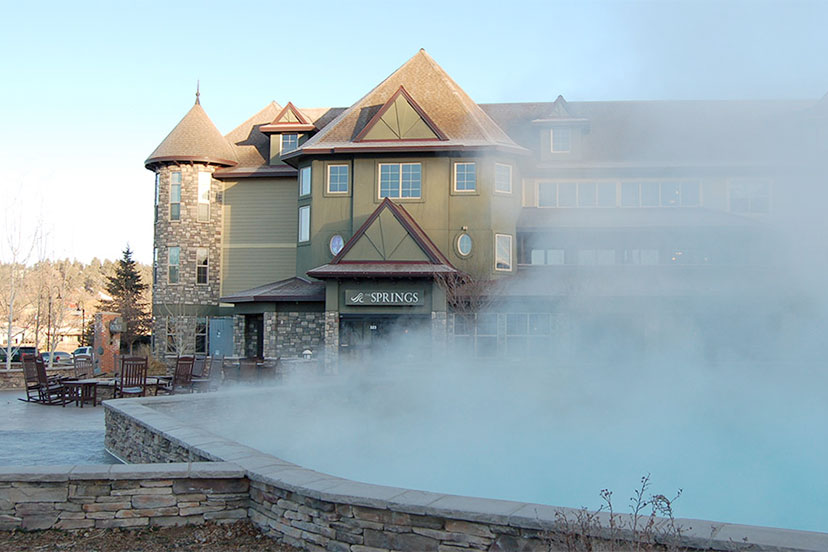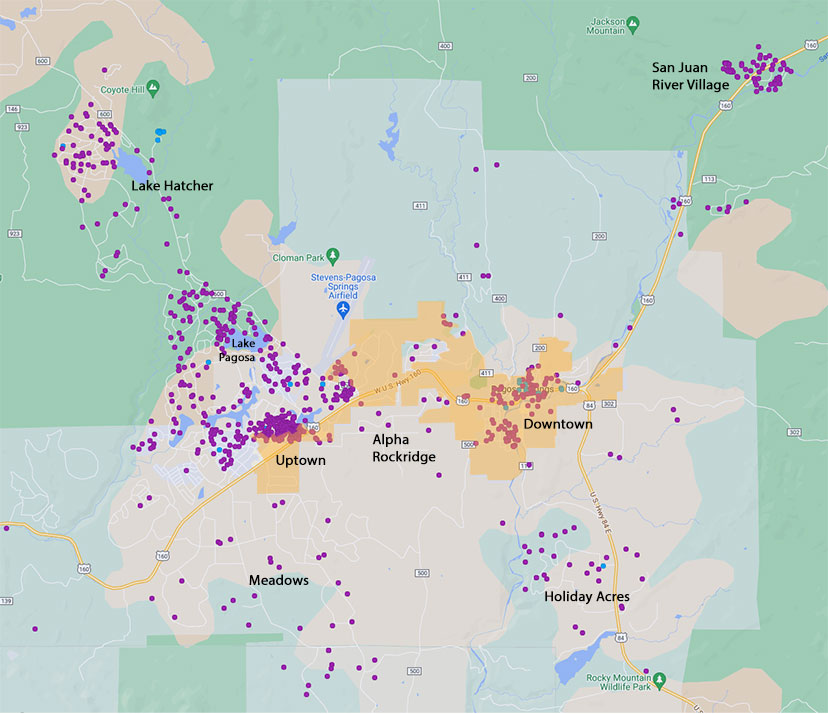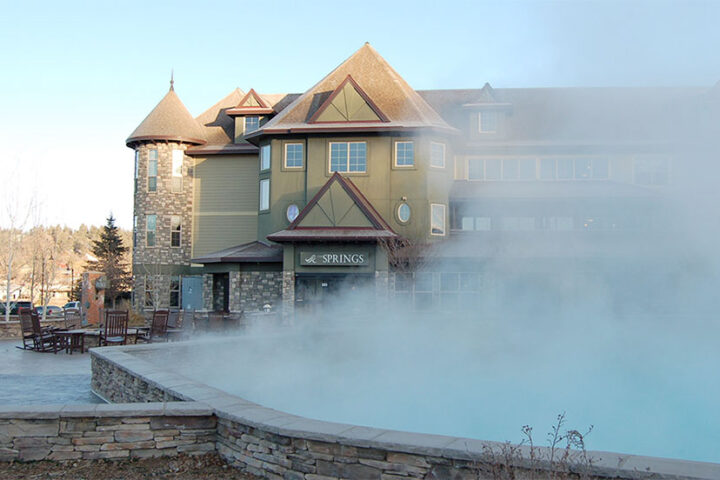PHOTO: Springs Resort Hotel, Pagosa Springs.
We don’t yet know if the Archuleta Board of County Commissioners will approve new vacation rental policies within the coming weeks. They were presented with a range of policy suggestions — including density caps and possible impact fees — by the County Planning Department, last June, but the composition of the three-member BOCC has changed with the election of District 3 Commissioner Veronica Medina and the resulting departure of Commissioner Alvin Schaaf.
Last month, a citizens study group presented the commissioners with policy suggestions similar to some of the options developed by the Planning Department last summer.
A County-appointed task force will reportedly make some recommendations on Tuesday, March 14.
As mentioned yesterday in Part Three, the Town Council has decided to consider a new ordinance — to be presented later this month, perhaps — that will authorize them to charge a new Short Term Rental impact fee, as recommended by the November 2022 Root Policy Research fee study (which you can download here.)
That study recommended an impact fee to mitigate certain negative effects caused by the STR industry, with estimated cost to address the ‘affordability gap’ calculated at $2,687 per STR unit, per year.

Another calculation by Root Policy broke down suggested ways to collect those fees.

At Tuesday’s meeting, when the possible impact fee ordinance was discussed, the Town staff recommended that — whatever size fee the Council decides on — the fee should apply equally to all STRs within the Town limits regardless of ‘ownership’ and regardless of size of the home.
Staff also asked that a flat fee be collected annually, rather than on a ‘per stay’ or ‘percentage’ basis.
The Pagosa Springs voters approved a similar impact fee last spring, amounting to an average of about $3,600 per year, but that fee was declared invalid after being challenged in District Court by a group of STR owners.
These suggested impact fees are pretty much in line with the fees charged by other mountain resort towns in Colorado.
The Council is also planning on discussing, at a future meeting, the existing STR regulations that have prevented some property owners from getting an STR permit. Most of those regulations were put in place in 2020.
Something I have noticed during interactions with citizens in my community:
Many people are confused by the fact that most residential homes are located outside the town limits. Even some people living as far outside the town boundaries as Lake Hatcher assume that they are within the municipality. Not so.
Here is a map showing the main residential areas in Archuleta County where Short Term Rentals are located, and in ‘orange’, the Town of Pagosa Springs limits. The underlying map is courtesy AirDNA.co. (Click the map for a larger version.)
As we can see in the map above, most of the vacation rentals in Archuleta County are located in the unincorporated county, where the number of STRs has been allowed to grow unchecked… until the imposition of a temporary moratorium last September.
AirDNA calculates the number of active STRs in the 81147 zip code at 1,013 as of yesterday, March 8. That number doesn’t necessarily refer to the total number of homes that operate as STRs within the community, because some STRs are operated only during certain seasons, and thus may not have been ‘active’ on March 8.
Ski season tends to be a more active rental season, as does the summer tourism season from about the mid-June through mid-September.
You can perceive the cyclical pattern in these graphs from AirDNA.co:
I quoted Town Council member Brooks Lindner yesterday in Part Three, when he was speaking that Tuesday’s Council meeting. Here’s that quote again:
“How do we make it fair to our commercial lodgers — our hotels — that pay property taxes at commercial rates for their property, if we charge a residential tax rate for STRs?”
Here we are presented with a couple of distinctions worthy of consideration. As far as I know, all hotels and motels in Colorado pay the ‘commercial’ 29% property tax rate… and all STRs in Colorado pay the ‘residential’ property tax rate of 6.95% property — one quarter the rate paid by hotels and motels.
This means, based on each property valuation, hotels and motels contribute four times the funding to our schools, hospital, fire district, water districts, County government, Town government, and library district, when compared to STRs.
For example, a downtown motel appraised at $1 million pays about $18,600 in property taxes annually. The commercial rate.
An downtown STR appraised at $1 million pays about $4,600 in property taxes. The residential rate.
Both are commercial businesses.
This is obviously an unfair situation, when we consider that about 85% of the STRs in the 81147 zip code are owned by investors who do not live in Archuleta County. And some might say, an unhappy situation, except for the STR owners themselves.
Another distinction worthy of consideration. When a hotel or motel gets built, it creates jobs and contributes to the tourism economy.
When a private residential home is converted from a housing unit into an STR, it also creates jobs and contributes to the tourism economy. But it also removes a residential home from full-time residential use — thus putting pressure on the housing market in a way that hotels and motels do not do.
For these two very important reasons, the Archuleta Board of County Commissioners might want to think long and hard about how we make our taxes and fees more fair, across the board.
The Pagosa Springs Town Council appears willing to do exactly that.
Will our commissioners follow suit?




